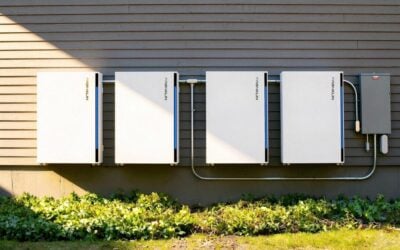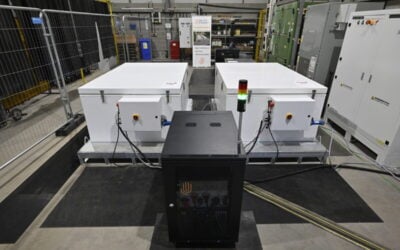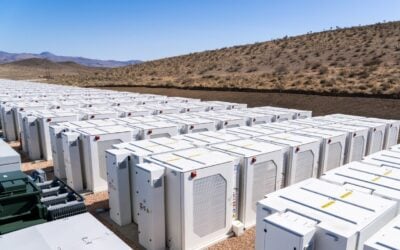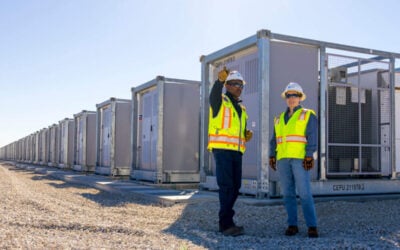
A push to establish an Investment Tax Credit (ITC) for energy storage has not only been welcomed by clean energy advocates and the industry, but might also meet the some stated aims of the Trump administration’s energy policies, an analyst has said.
Michael Doyle, a Democrat, has proposed in the US House of Representatives the bill HR2096, an amendment to the tax code to issue credits “for energy storage technologies and other purposes”. At present, the ITC is applicable to purchases of solar PV equipment and energy storage, but only if bought and installed at the same time as the solar.
The solar tax credit is equivalent to 30% of the cost of solar equipment purchases and offers customers a rebate via their income tax bill. It was due for expiry by 2017 but was unexpectedly extended and is now being phased out between now and 2022.
It’s only the latest in a series of efforts by some US policymakers to introduce an ITC specific to energy storage. In November last year, a group of renewable energy and environmental organisations urged US Congress to “clarify” the eligibility of energy storage for the tax break, after New Mexico Senator Martin Heinreich proposed a bill in 2016, S.1868, which would amend revenue codes to apply either the ITC, similar tax relief measures or include energy stored in batteries, flywheels and pumped hydro in ‘Energy Credits’ policies. Unsurprisingly, Energy-Storage.news has already received comments from several energy storage companies welcoming the possible extension of the ITC to include their technologies.
Try Premium for just $1
- Full premium access for the first month at only $1
- Converts to an annual rate after 30 days unless cancelled
- Cancel anytime during the trial period
Premium Benefits
- Expert industry analysis and interviews
- Digital access to PV Tech Power journal
- Exclusive event discounts
Or get the full Premium subscription right away
Or continue reading this article for free
Alex Eller, senior analyst with Navigant Research, told Energy-Storage.news that he hoped Rep Doyle’s bill might have a better chance of going through into law than some previous efforts, which appear to have “kind of stalled,” Eller said.
It still needs to be determined what kinds of technologies or applications might be eligible, from large-scale, front-of-meter systems to distributed, behind-the-meter energy storage and whether they perform specific tasks that have a widespread benefit, such as reducing peak demand on the grid.
While it is difficult to quantify the sort of impact such a policy might have, a storage ITC “will obviously be beneficial, because it’ll have a pretty direct impact on the bottom line of projects, so it’ll make new projects cheaper and will result in more of them,” Eller said.
Similarly, while it is too early to judge what kind of final bill might eventually be passed, the Navigant analyst said it could be desirable to “tie it to emissions reductions or cost savings for the grid”, and other metrics that demonstrate a “direct societal benefit, versus, for example, paying people to install a residential battery and while it reduces their [energy] cost, it might not have much of an impact on the overall grid”.
From ‘all of the above’ to energy storage for the good of the whole network
While the presidency of Donald Trump has been marked with conspiracy-level pronouncements on climate change and strong political and support in rhetoric for the coal industry, this has in practice resulted in a “whole push to bail out coal and nuclear plants”, under the banner of improving overall energy resiliency, Alex Eller said. Ironically, the resiliency of the whole network – including those plants – could be well served if energy storage were cheaper and more readily deployable.
“In a lot of the analysis, when they’ve put out the plans to subsidise the coal and nuclear plants that they found very few of the outages, almost none of them, are due to there being not enough fuel onsite,” Eller said.
“It’s all about issues on the transmission / distribution grid, infrastructure going down and things like that, so storage would actually have a much bigger impact on the resiliency of the grid because it can solve a lot of those challenges.”
If the stated desire of the government is to increase energy resiliency, Eller said, an ITC for energy storage could be a “much more effective way of doing that” than in constructing or keeping open fossil fuel or nuclear plants, some of which have to run 24/7, unlike battery facilities. There are already Republicans supporting clean energy, Eller pointed out, but playing into the resiliency angle could be a good way to persuade others to go forwards with the ITC.
For some commercial solar-plus-storage projects in receptive states such as California, the ITC and California’s Self-generation Incentive Program (SGIP) subsidy, in particular, have not been critical to the profitability of projects, but had helped to get financing over the line in some cases. In terms of an energy storage ITC, Navigant’s Alex Eller agreed that the 30% tax rebate would be unlikely to “make or break” projects but in some cases in “marginal states” could be a big boost where the gap between cost and returns are diminishing. In other words, if an energy storage project does not make financial sense in its own right, the 30% rebate amount is unlikely to mean thousands of essentially redundant or unworkable projects cropping up across America.
That said, in an interview with another financier, Nancy Pfund of DBL Partners in July 2017, she described the solar ITC as a “huge success story”. However, Pfund said that while many in the industry desired the ITC’s extension to standalone storage, she wasn’t sure it was needed.
“In this political climate it’s very unclear if that [an ITC for energy storage] would be feasible, but the good news is that it’s not 100% necessary because you’ve got huge states like California with supportive policies that create the model and then as you’re scaling – and this is assisted by the growth of the EV industry that’s driving down battery prices – you’ll get costs in line over the next few years so that they become compelling on their own vis a vis alternative approaches.”
Pfund gave the example that economic modelling and analysis “that show the true cost of the peaker plant approach”, comparative to providing peak power from solar-plus-storage would demonstrate the justification for an approach that favours storage.





